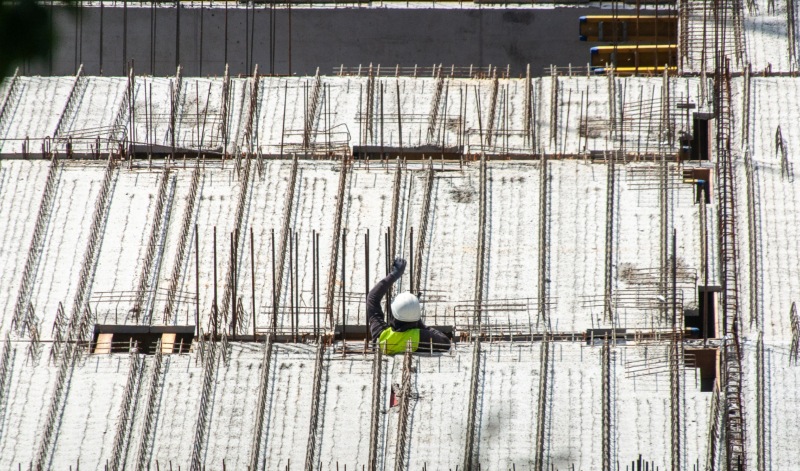What Is an RFI in Construction and What Should It Include?

In construction, even minor misunderstandings can lead to costly delays—and that’s where RFIs come in. A Request for Information, also known as RFI, helps project teams clear up confusion, resolve missing details, and avoid rework by asking targeted questions early on. Whether you’re a contractor checking dimensions or reviewing open items during risk reviews, knowing how to handle RFIs can keep things moving. This article breaks down what an RFI is, when to use one, and how to write and manage them without creating more headaches.
What Is RFI In Construction?
An RFI in construction, or Request for Information, is a formal inquiry document that seeks clarification on project-related uncertainties. It ensures that all stakeholders—such as contractors, architects, and engineers—have a unified understanding of plans or specifications. When project details are vague or conflicting, these inquiries resolve ambiguities by obtaining specific, accurate answers before work progresses.
Requests for information often address design discrepancies, missing documentation, or unforeseen site conditions. For example, a contractor might submit an RFI to confirm dimensions not outlined in blueprints or to address incompatible materials specified in plans. These inquiries reduce errors and delays by fostering proactive communication among teams.
The meaning of RFI in construction goes beyond just answering questions. It helps maintain standards, schedules, and budgets. Each request documents the issue and its resolution in a traceable format. This structured process promotes accountability, ensuring decisions align with overall project goals.
RFIs must follow a clear format, typically including a description of the issue, a reference to related documents, the requested clarification, entities or people involved and other information. Efficient RFI management minimizes back-and-forth exchanges, making it easier to solve problems promptly and keep projects on track.
Importance of RFIs in the Construction Process
RFIs are essential for maintaining clarity and efficiency in construction projects. They serve as a structured way to resolve issues that could otherwise lead to complications and delays. Understanding the meaning of RFI in construction highlights its role in addressing project uncertainties and fostering collaboration.
Clarifying Ambiguities In Project Plans
Construction projects rely on precise details for successful execution. RFIs help eliminate confusion by addressing unclear specifications, incomplete drawings, or contradictory instructions in the plans. When contractors identify discrepancies, submitting an RFI allows design teams to provide clarifications. This ensures that all parties proceed with the correct understanding, preventing errors during the construction process. By documenting each inquiry, RFIs also create a clear record for future reference.
Ensuring Accurate Communication Between Stakeholders
Effective communication between stakeholders is critical for project success. RFIs facilitate structured dialogue between contractors, architects, and clients by providing a standardized process for raising and addressing questions. Each RFI includes detailed descriptions and references related to the issue, ensuring precise information exchange. This transparency minimizes misunderstandings and keeps everyone aligned with the project’s goals. For example, resolving design conflicts early through RFIs prevents misinterpretations that could disrupt the construction schedule.
Avoiding Costly Delays And Rework
When unresolved ambiguities lead to incorrect execution, projects face delays, added expenses, and potential rework. RFIs mitigate these risks by addressing issues proactively before construction progresses. Early resolution of discrepancies means fewer disruptions and a more streamlined building process. For instance, identifying errors in site conditions through RFIs prevents wasted time and resources during implementation. This structured approach safeguards budgets and timelines, supporting overall project efficiency.
Common Scenarios Requiring RFIs In Construction
RFIs aren’t just paperwork—they’re a practical tool used when something on the plans doesn’t quite add up. Below are some of the most common situations where submitting an RFI helps keep the project on track.
Design Clarifications
Confusion often arises from incomplete or ambiguous architectural plans. RFIs help architects, contractors, and engineers resolve issues related to missing dimensions, conflicting drawings, or undefined construction details. For example, when a contractor notices discrepancies between structural and electrical layouts, an RFI can pinpoint the problem and request updated information. This prevents errors during implementation and keeps the project on track with its original objectives.
Material Specifications
Unclear or inconsistent material requirements often result in RFIs. By specifying the type, grade, or source of materials, contractors avoid delays in procurement and on-site adjustments. For instance, an RFI might confirm whether specified materials are available locally or within budget constraints. Clarification ensures compliance with project standards and streamlines the supply chain process.
Code Compliance Questions
RFIs resolve code-related uncertainties encountered during design reviews or construction phases. Questions about building codes, safety regulations, or environmental standards require prompt answers to meet compliance. If a contractor identifies conflicts between specifications and local building laws, an RFI addresses the issue with regulatory authorities or project designers. This ensures the project adheres to legal requirements while preventing future complications.
The Basics: How To Write An RFI For Construction Projects
Creating a well-structured RFI ensures efficient communication and minimizes delays in construction projects. A concise, context-driven submission improves clarity for all parties involved. Here are just the basics, but there’s much more to writing an effective RFI, and it also depends on the situation.

Structuring The Question Clearly
Any RFI benefits from a precise and focused question. The issue should be presented in detail, leaving no room for misinterpretation. Instead of broad questions, narrow the focus to a single topic. For instance, if design discrepancies are identified, specify the exact location or feature requiring clarification. Reference specific sections within drawings, plans, or contracts to describe the problem accurately and make responses more actionable.
Providing Relevant Context
An RFI gains clarity through contextual details that establish background information. Outline the situation leading to your inquiry, citing any discrepancies, prior communications, or observations affecting the project. For example, when specifying materials, include any associated drawings, manufacturer information, or technical requirements. By giving this context, recipients evaluate the inquiry within its proper framework.
Setting A Reasonable Response Timeline
To avoid hindering progress, clearly specify the urgency behind an RFI. Indicate the required timeframe for addressing it, taking into account the project’s schedule and upcoming tasks. In cases like unresolved issues involving a critical path, prioritize these RFIs while respecting the responder’s workload. A well-defined and justifiable timeline promotes accountability without disrupting collaboration.
Best Practices For Managing RFIs In Construction
Effectively managing RFIs minimizes confusion and ensures projects remain aligned with their goals. Applying organized methods to handle RFIs can save time and resources.
Centralized Documentation
Documenting RFIs in one location allows easy access and reduces miscommunication. Teams working on construction projects benefit from shared platforms where they can upload, review, and track RFI submissions. Referencing previous RFIs with search filters helps answer recurring questions without having to duplicate efforts. Using tools like AI construction contract management software can simplify this process, keeping records secure, searchable, and accessible anytime.
Streamlining Coordination
Coordinating RFI submissions and responses ensures all parties stay informed. Assigning a specific person to oversee the process helps maintain communication flow between contractors, architects, and suppliers. Scheduling regular project check-ins for discussing critical RFIs prevents delays in decision-making. Digital platforms with notification features support seamless updates, ensuring timely resolutions.
Tracking Responses And Updates
Keeping track of RFI responses maintains accountability and prevents unresolved issues. Stamped answers, linked to each inquiry, help teams verify approved changes and avoid errors. Setting milestones for reviewing updates guarantees that no response goes unnoticed. Project dashboards showing response statuses help prioritize pending clarifications, allowing tasks to move forward efficiently.
How to Respond to an RFI in Construction
Responding to a Request for Information (RFI) in construction is a critical process that ensures clarity and alignment between stakeholders. When you receive an RFI, it’s essential to follow a systematic approach to ensure an effective response:
- Review the RFI Thoroughly: Begin by reading the RFI in detail. Identify the specific questions or issues raised and ensure you understand the context and implications for the project.
- Gather Necessary Information: Consult with relevant team members, such as project managers, architects, or engineers, to obtain accurate and comprehensive information. This collaboration is key to developing a well-informed response.
- Respond Clearly and Concisely: Draft your response in clear and precise language. Address each question individually, providing detailed explanations or references where applicable. Ensure that your response directly aligns with the project requirements and specifications.
- Document Your Response: Organize your response in a professional format. Include any necessary attachments or supporting documents that may assist in the clarification process.
- Follow Up: After sending your response, it is advisable to follow up to confirm receipt and address any potential further questions or needs for clarification that may arise.
By following these steps, you can effectively manage the RFI process, promoting better communication and reducing misunderstandings within the construction project.
Challenges With RFIs And How To Overcome Them
RFIs often face delays in responses, lack clarity, or become overwhelming in volume, all of which can stall construction progress. Vague questions lead to confusion, while poor documentation and disorganized records can lead to miscommunication. To address these issues, teams should use structured templates, set clear response deadlines, consolidate similar inquiries, and centralize documentation. Regular communication and assigning a dedicated RFI coordinator can also improve collaboration and keep workflows on track.
Conclusion
RFIs are more than a formality; they’re a practical tool that helps construction teams avoid confusion, delays, and costly mistakes. From clarifying plans to ensuring compliance and maintaining clear communication, a well-managed RFI process supports smoother project execution. Whether you’re drafting an RFI or responding to one, taking the time to be clear, organized, and timely can make a real difference on the job site. With the right approach, RFIs help keep projects moving forward without unnecessary back-and-forth or missteps.
Book a demo and learn how Document Crunch can help your team better manage RFIs!